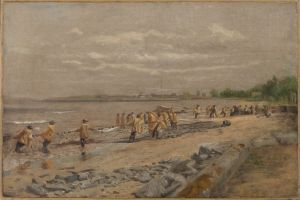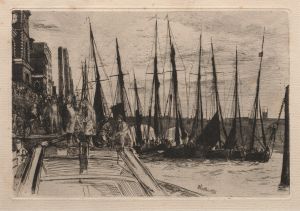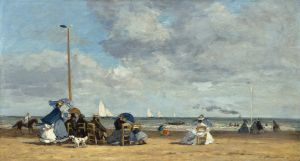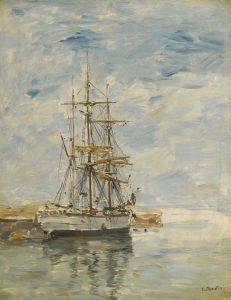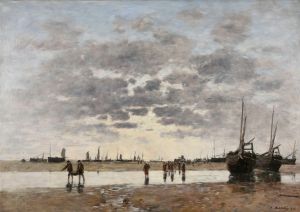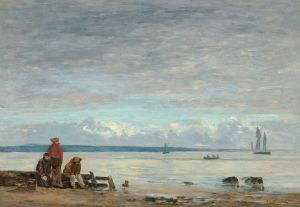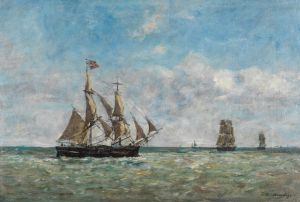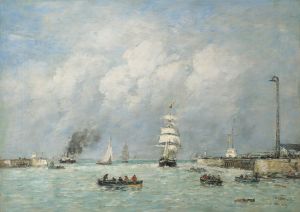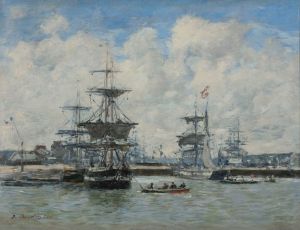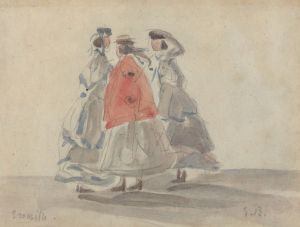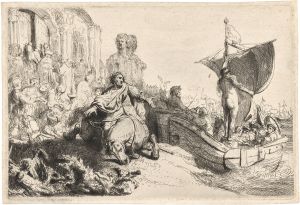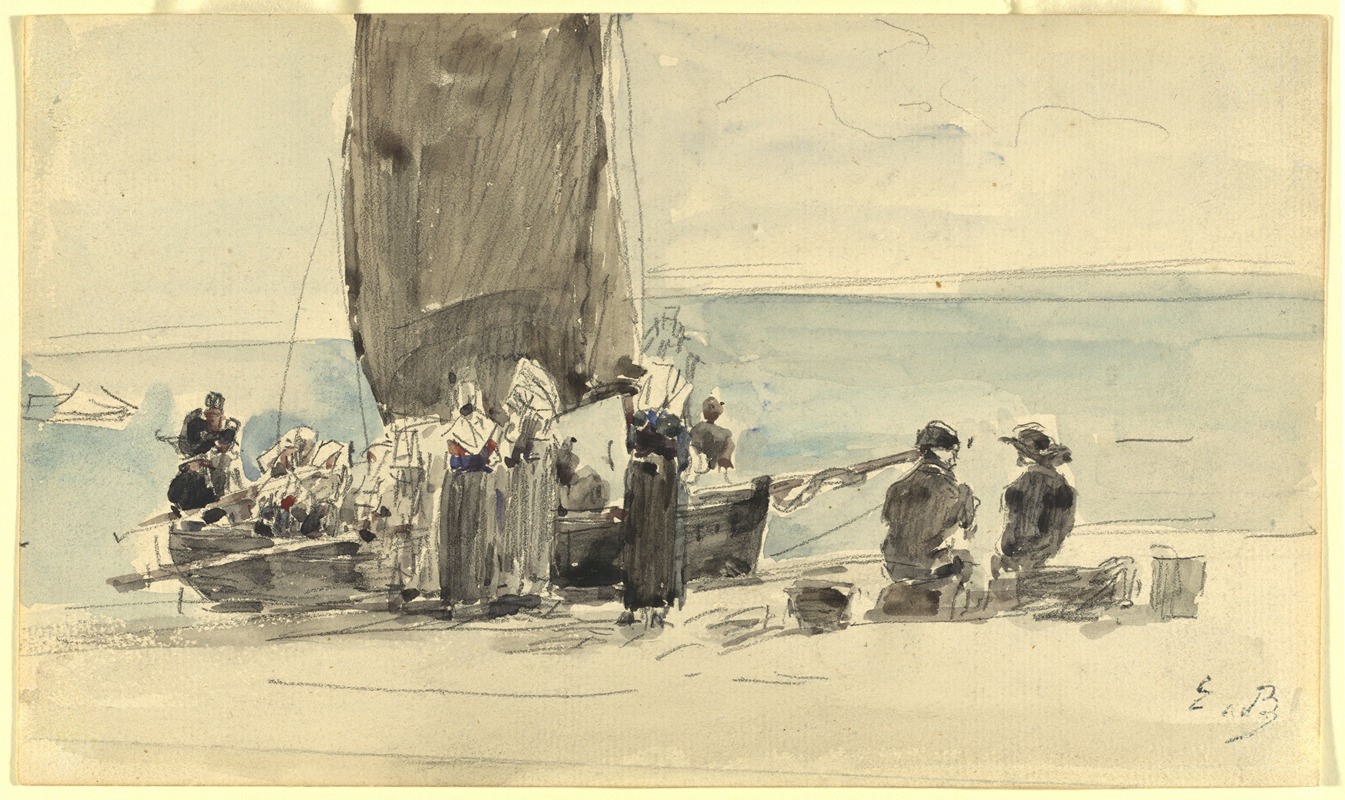
Loading the Boats
A hand-painted replica of Eugène Boudin’s masterpiece Loading the Boats, meticulously crafted by professional artists to capture the true essence of the original. Each piece is created with museum-quality canvas and rare mineral pigments, carefully painted by experienced artists with delicate brushstrokes and rich, layered colors to perfectly recreate the texture of the original artwork. Unlike machine-printed reproductions, this hand-painted version brings the painting to life, infused with the artist’s emotions and skill in every stroke. Whether for personal collection or home decoration, it instantly elevates the artistic atmosphere of any space.
"Loading the Boats" is a painting by the French artist Eugène Boudin, who is widely recognized as one of the most important precursors to the Impressionist movement. Boudin was born on July 12, 1824, in Honfleur, France, and he developed a profound connection to the sea and coastal scenes, which became a central theme in his work.
The painting "Loading the Boats" exemplifies Boudin's fascination with maritime life and his ability to capture the transient effects of light and atmosphere. Although the exact date of the painting is not definitively known, it is believed to have been created in the latter half of the 19th century, during a period when Boudin was particularly focused on depicting the bustling activity of ports and harbors.
In "Loading the Boats," Boudin portrays a busy scene at a harbor, where workers are engaged in the laborious task of loading goods onto boats. The composition is characterized by its dynamic arrangement of figures and vessels, creating a sense of movement and industriousness. Boudin's brushwork is loose and fluid, capturing the essence of the scene rather than focusing on minute details. This technique allows him to convey the fleeting quality of the moment, a hallmark of his style that would later influence the Impressionists.
The palette of "Loading the Boats" is dominated by earthy tones and muted colors, reflecting the natural environment and the working-class subject matter. Boudin's use of light is particularly noteworthy; he skillfully depicts the interplay of sunlight and shadow, enhancing the realism and immediacy of the scene. The sky, often a significant element in Boudin's paintings, is rendered with a delicate gradation of blues and whites, suggesting a typical day on the coast.
Boudin's interest in maritime themes can be traced back to his early life in Honfleur, a port town on the Normandy coast. His father was a harbor pilot, and young Boudin spent much of his time observing the activities around the docks. This early exposure to the maritime world left a lasting impression on him and profoundly influenced his artistic direction.
Throughout his career, Boudin remained dedicated to painting en plein air, or outdoors, a practice that allowed him to capture the changing effects of light and weather with great immediacy. This approach was somewhat unconventional at the time but would later become a defining characteristic of the Impressionist movement. Boudin's work earned the admiration of many of his contemporaries, including Claude Monet, who regarded him as a mentor and a significant influence on his own development as an artist.
"Loading the Boats" is a testament to Boudin's ability to transform everyday scenes into compelling works of art. His keen observation, masterful handling of light, and dedication to capturing the essence of his subjects have secured his place as a pivotal figure in the history of French painting. Today, Boudin's works are held in high esteem and can be found in major museums and collections around the world, continuing to inspire and captivate audiences with their timeless beauty and authenticity.





